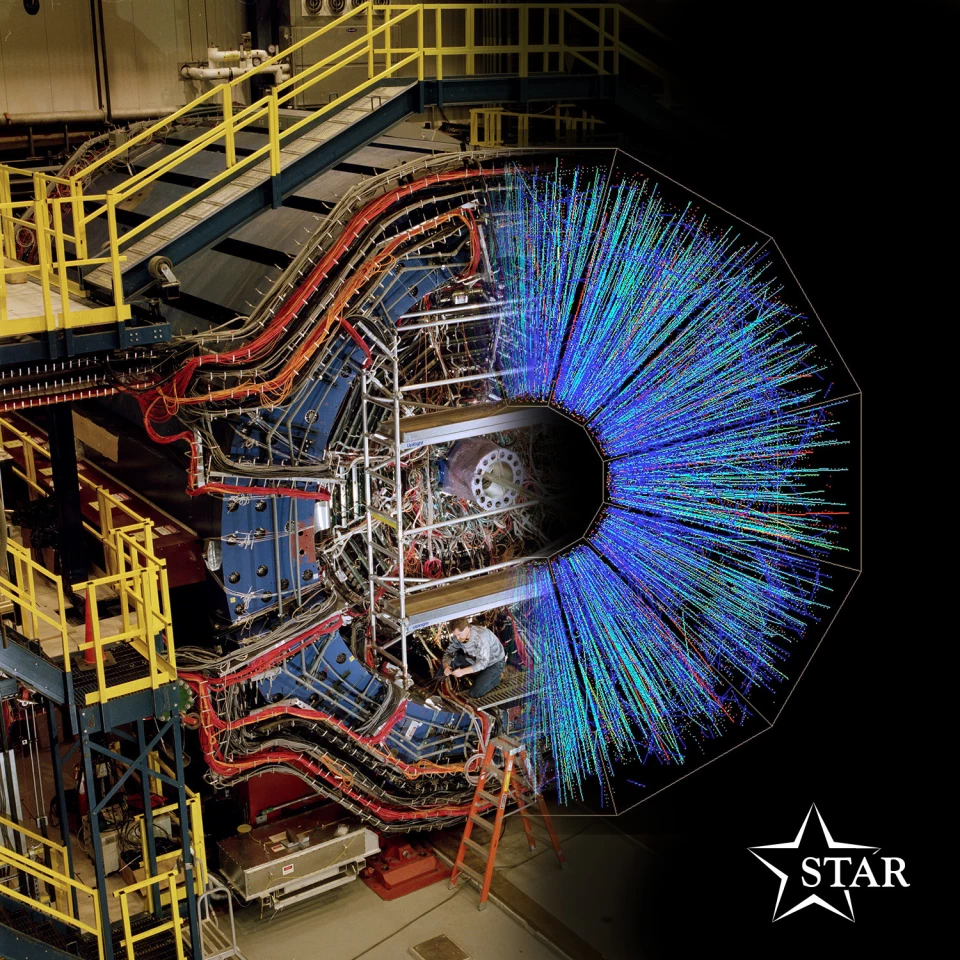Physicists have created the heaviest clumps of antimatter particles ever seen. Known as antihyperhydrogen-4, this strange stuff could help us solve some of the most puzzling physics mysteries.
Antimatter is basically just regular matter that has the opposite charge. That’s it. It doesn’t sound very exciting put like that, but there are massive implications from that simple difference: mainly, whenever matter and antimatter meet, they annihilate each other in a burst of energy. If we could harness that, we could make the most efficient spacecraft engines ever – or the most devastating weapons. Knowing humanity we’ve got our money on the latter.
Anyway, every particle has an antiparticle, and these should be able to group together to form larger antiatoms of familiar elements – antihydrogen and antihelium have been produced, but theoretically there should be a whole anti-periodic table.
Now scientists have produced the heaviest antimatter nucleus so far, a substance known as antihyperhydrogen-4. It’s made up of an antiproton, two antineutrons, and an antihyperon. While protons and neutrons are well known, hyperons are less so, but they’re essentially a slightly heavier version of a neutron.
These antinuclei were produced at the Relativistic Heavy Ion Collider (RHIC), a particle accelerator that recreates the conditions of the early universe. Here, heavy elements are smashed together to produce showers of new particles, including some antimatter particles. On extremely rare occasions, some of these antimatter particles meet up to form more complex antinuclei. In fact, among the billions of particles produced in these collisions, only 16 antihyperhydrogen-4 nuclei were confidently detected.
“It is only by chance that you have these four constituent particles emerge from the RHIC collisions close enough together that they can combine to form this antihypernucleus,” said Lijuan Ruan, a co-spokesperson for the project.

Detecting them isn’t easy – these antihyperhydrogen-4 nuclei decay in about one-10th of a nanosecond. Instead, the instruments detect the particles that they decay into, tracing their paths back to see if they spent a brief period “together” in a nucleus, traveling a certain distance after the collision of the original heavy atoms.
From their detections, the team was able to compare the lifetime of antihyperhydrogen-4 to that of hyperhydrogen-4, and found they seem to be the same. That was expected, since matter and antimatter of the same elements should only differ in their charge – but there is a chance that there are other differences, which would hint at physics beyond the Standard Model.
Understanding antimatter better could help us answer one of the most profound problems in physics: why are we here? Our best models suggest that matter and antimatter should have been created in equal amounts in the Big Bang, but if that was the case, constant annihilation events should basically have left the universe empty by now.
Since that obviously didn’t happen, there must have been a tiny imbalance that created more matter than antimatter, and studying differences between the two could help us find what. The next steps in the research are to check for differences in the masses of these particles and antiparticles.
The study was published in the journal Nature.





